Artificially stabilizing hypoxia-inducible factor may stop the damaging effects of hyperoxia in preterm infants

Above: A Cole Eye Institute team is at the final stages of identifying a small molecule drug to counteract the source of retinopathy of prematurity. Here, ophthalmic researchers Jonathan Sears, MD, and George Hoppe, MD, PhD, (foreground) discuss preparation of retinal specimens for analysis of the effect of hypoxia-inducible factor stabilization on retinal vascular development under hyperoxia.
Cleveland Clinic is a non-profit academic medical center. Advertising on our site helps support our mission. We do not endorse non-Cleveland Clinic products or services. Policy
The path to preventing the ocular underdevelopment that leads to retinopathy of prematurity (ROP) just may start in the liver. Nearly 15 years of research at Cleveland Clinic Cole Eye Institute have steered physician researcher Jonathan Sears, MD, toward a pharmaceutical approach to counteracting the destructive effects of hyperoxygenation in preterm infants. The benefits may extend beyond the eyes to the lungs and brain as well.
“I really believe we have the chance to eradicate not only one of the leading causes of infant blindness worldwide, but also chronic lung disease associated with prematurity, which accounts for 10,000-15,000 new cases annually in the United States, and cerebral palsy, of which at least 30% is caused by severely premature birth,” says Dr. Sears.
His therapeutic concept is based on earlier lab findings of a link between the diseases and low levels of hypoxia-inducible factor (HIF), and the artificial stabilization of HIF with small molecules that essentially trick organs into functioning as if they were at in utero oxygen-saturation levels.
Dr. Sears recently was awarded a Cleveland Clinic Caregiver Catalyst Grant to fund the next steps in his team’s work: the synthesis, design and testing of the most promising small molecule drugs. Catalyst Grants support the innovative ideas of Cleveland Clinic caregivers. Funded projects must demonstrate outcomes within 12 months.
Infants born severely premature (at gestation less than 27 weeks) have about an 80% chance of developing ROP. The cause is twofold: The retina is not fully developed. (Retinal development begins at 16 weeks. A child born at 24 weeks, for example, will have only about 30% of normal retinal development.) And the physiological hypoxia within the mother’s uterus, which facilitates gene expression and fetal development, is replaced with much higher oxygen levels in a NICU isolette.
“In utero, oxygen saturation is 85%, which translates roughly to an arterial oxygen saturation of 25-30 mm Hg,” says Dr. Sears. “In the NICU, oxygen saturation monitors for preterm infants show 95-98%, which translates to arterial oxygen saturation of about 70 mm Hg, at least twice the amount the infant would be getting if not born early.”
While necessary for the survival of preterm infants, this level of oxygen saturation suppresses vascular growth in the retina. It does so by inducing catabolism of a central transcription factor (HIF) that controls the growth of hundreds, possibly thousands, of genes necessary for normal, sequential development of structures, including the eye, lung and brain.
Artificially stabilizing HIF, preventing its breakdown, may solve the hyperoxia conundrum in preterm infants.
In a 2008 lab study, a research team led by Dr. Sears and ophthalmic researcher George Hoppe, MD, PhD, discovered that the use of small molecules could prevent the oxygen-induced catabolism of HIF, allowing infants to grow and develop normally. Not only did it protect the retina, it protected the lung and helped prevent demyelination in the brain.
“When we held up test retinas and looked at them with the naked eye, we could see how striking the protection was in comparison to the retinas of models not treated with HIF-stabilizing agents,” says Dr. Sears.
However, the team was surprised to find that HIF levels in the retina were the same between test and control models. HIF levels in the kidney and brain were the same as well. The only place HIF had been stabilized in models treated with small molecule therapy was the liver.
Since 2008, the team has continued to study HIF-stabilizing drugs, showing that different drugs have tropisms for different organs.
“The molecule used in our work is very unstable. Its structure enables it to be catabolized in both blood and the liver, which causes it to become trapped in the liver,” explains Dr. Sears. “It’s not stable enough to go elsewhere in the body. That’s actually a benefit, because while HIF stabilization is good for some organs, it’s not good for others, including the heart. We found that if we target HIF in the liver, it will safely protect the retina, lung and brain without causing harmful effects on other organs.”
The team tested the validity of this concept by:
The team then used untargeted metabolic profiling to probe deeper into the function of the liver and identified two pathways critical to infant development: serine and one-carbon metabolism, and the urea cycle.
“The detoxification of free ammonia into excretable urea turned out to be very important in protecting children in hyperoxia,” says Dr. Sears.
The team uncovered that oxygen induces metabolism of glutamine, an amino acid that sends carbon into the Krebs cycle, which provides energy for the fetus. For every mole of glutamine consumed, approximately two moles of ammonia are freed. Structures peripheral to the liver must convert that ammonia into an amino acid that is carried to the liver where it is metabolized into urea.
“It’s a giant circle, where infant development is perturbed by hyperoxia, the body responds by burning glutamine, that creates excess ammonia that needs to be metabolized, and we think HIF stabilization is a cure because it helps rapidly absorb that free ammonia,” says Dr. Sears. “It makes a lot of sense on paper, but we have to prove it. That’s very difficult to do, but we’re getting there.”
Today, the standard of care for ROP involves ablating the undeveloped area of the retina, destroying the origin of the abnormal cytokines that lead to blindness. While usually effective at preserving vision, ablation is often difficult to implement and does not address the pathogenesis of the disease. The same is true of anti-VEGF agents, also used to treat ROP.
Using a small molecule drug to counteract the source of ROP, targeting the liver to protect distal capillary beds in regions connected only by the bloodstream, is a novel approach. “Organ systems pharmacology,” itself, is a new field.
“People often speak unfavorably of a pharmaceutical agent’s needing to be ‘cleared by the liver,’” says Dr. Sears. “In our case, we want an agent that can by cleared by the liver. We just need to send a signal to the liver, and then have the liver do the heavy lifting for us.”
The drug needs to work for only a few hours, he notes. The downstream effects of stabilizing HIF are so potent that they persist for days following administration of the drug.
In theory, the drug would be administered intravenously at birth, then once a week until the child reaches a corrected gestational age of 30 weeks. After that, the drug is no longer needed. For an average premature child, the total course would entail two to four doses.
“We already know what the drug should look like, and we know its biochemical properties — its structural backbone,” says Dr. Sears. “Now we just need a prodrug that the liver can metabolize.”
That’s what the Catalyst Grant will help design, with the support of the Molecular Screening Core at Cleveland Clinic’s Lerner Research Institute. After that, the team will test the compounds generated and select those most promising.
“We’ve become quite good at screening pharmaceuticals to test their potency,” says Dr. Sears. “We have in vivo models that can tell us exactly where the drug is acting, retina models of the human correlate ROP, lung models of the human correlate bronchopulmonary dysplasia (BPD), and we’ve just recently developed a model of periventricular leukomalacia (PVL).”
After testing, the team will evaluate all major organs with light microscopy to ensure no toxicity.
“This could be a paradigm shift in the treatment of ROP,” says Dr. Sears. “We have a single strategy that could protect preterm infants — 15 million born worldwide each year — from a triad of disease: ROP, BPD and PVL. It sounds good. It looks good. We just need to identify the compound that can translate it. We are right at the finish line.”
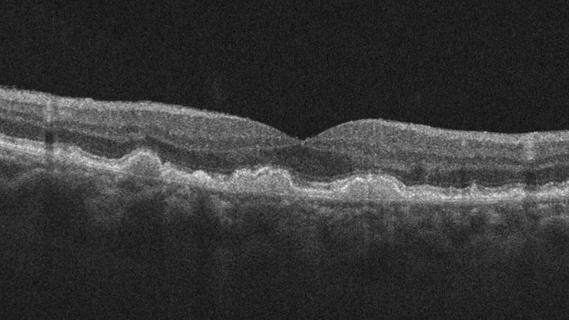
Early data shows risk is 73% higher in patients with lupus, 40% higher in patients with rheumatoid arthritis

Identifies weak spots in the cornea before shape change occurs

Researchers to study retinal regeneration in zebrafish with new grant from National Eye Institute

30% of references generated by ChatGPT don’t exist, according to one study
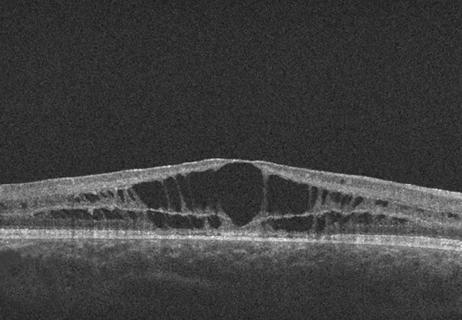
Study followed patients an average of eight years
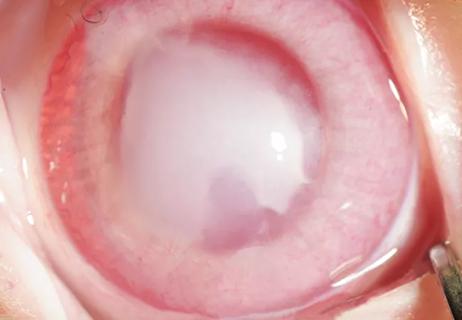
Studies indicate dramatic results when used topically with or without corticosteroids
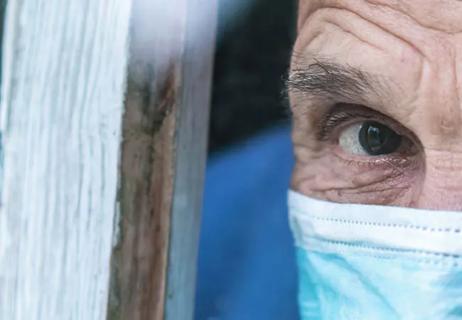
53% of participants didn’t need anti-VEGF for six months or longer
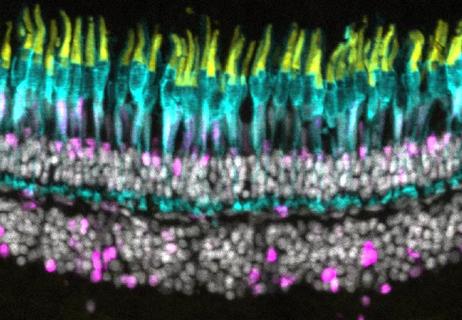
Notch pathway inhibition preserves retinal neurons and promotes regrowth in zebrafish